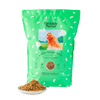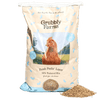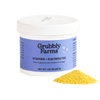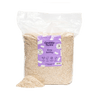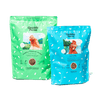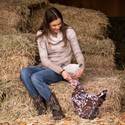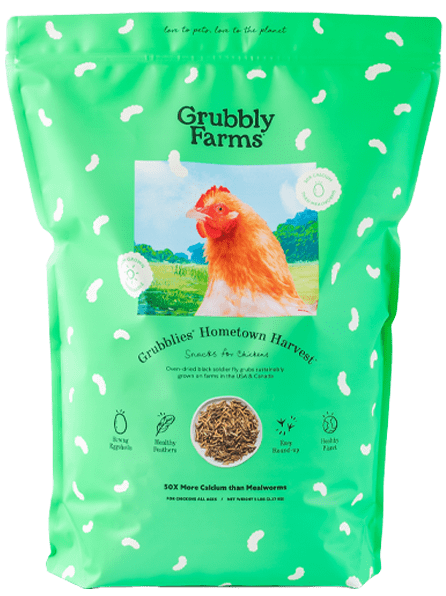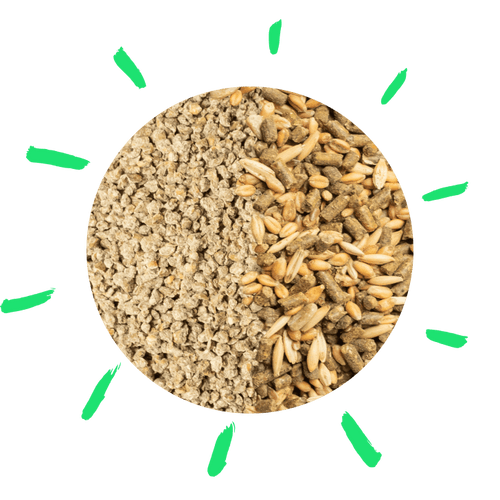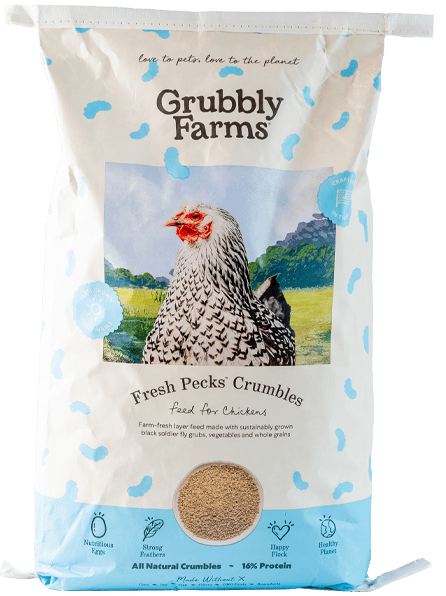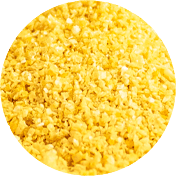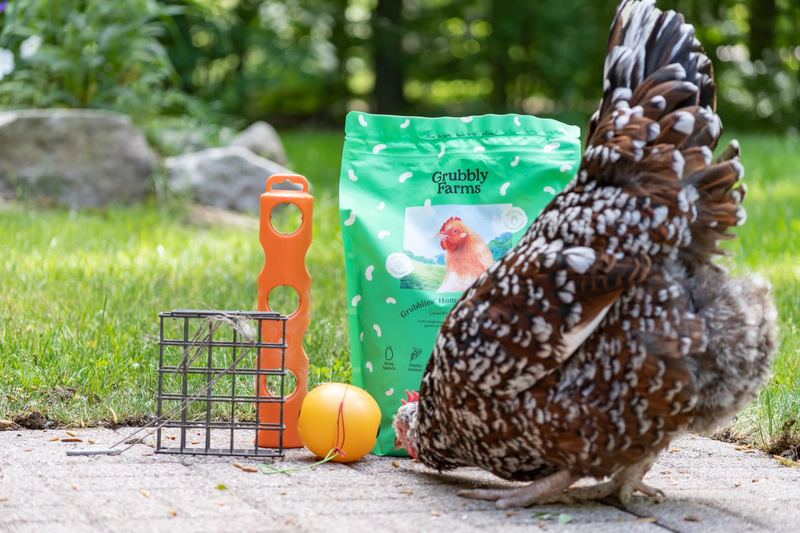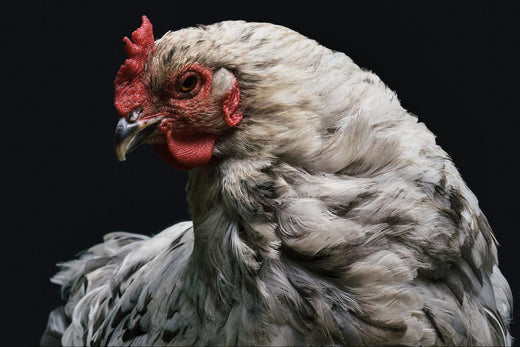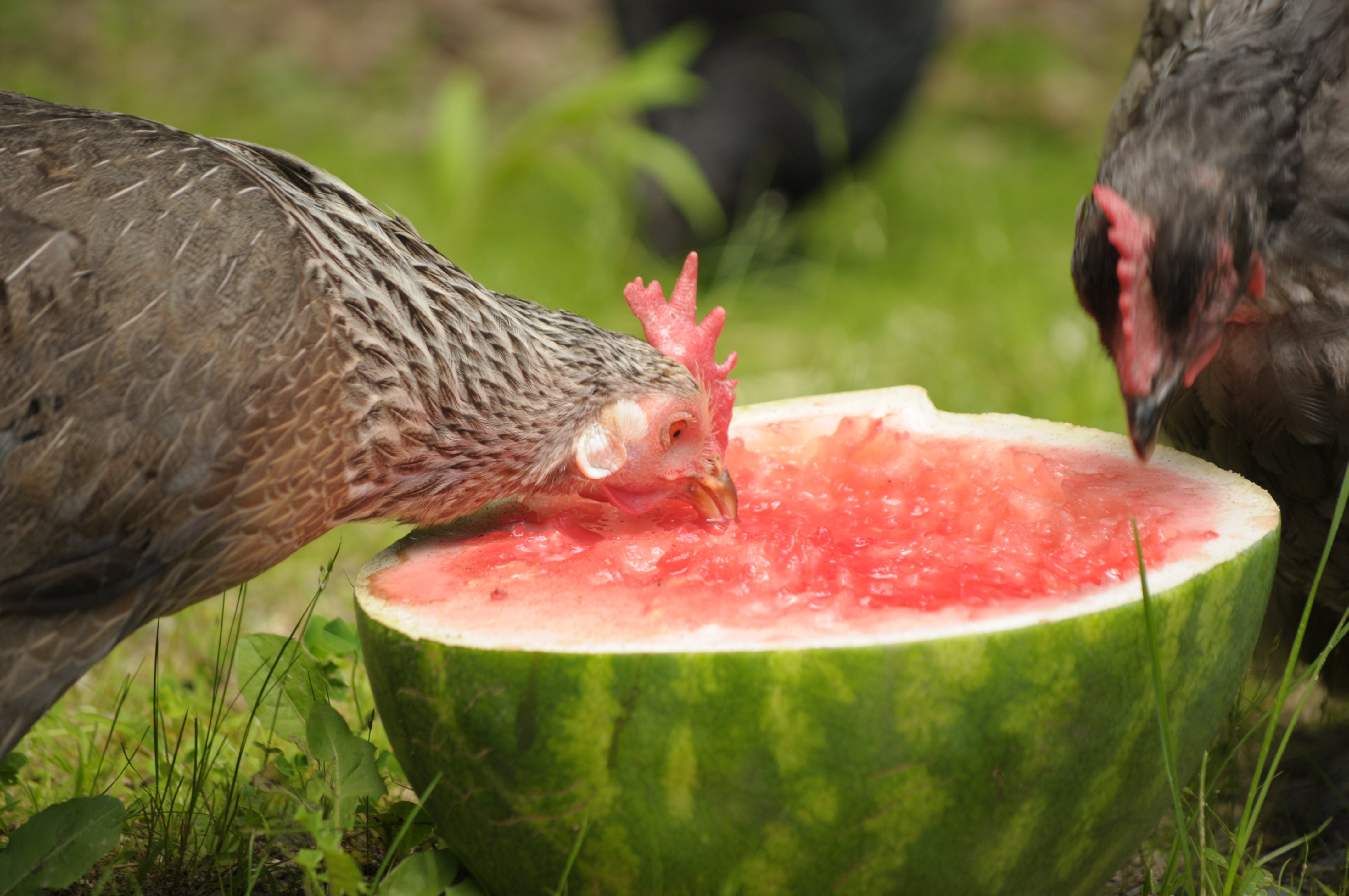Salmonella is a bacterium that is often associated with food poisoning. There are many varieties of salmonella bacteria, and some are more hazardous than others. Salmonella bacteria can infect both chickens and people, and chickens can be a primary carrier of the bacteria which can spread to humans. Learning about salmonella in chickens and understanding how the salmonella bacteria can be transmitted, along with common symptoms of a salmonella infection, can help keep you and your flock safe!
What is salmonella?
Salmonella is the name for an infection caused by the Salmonellae bacteria. Different varieties of salmonella bacteria in the Salmonella Enterica species are the types of bacteria that infect chickens.
Salmonella enteric species mainly infect the digestive tract. The bacteria can cause extreme inflammation in the intestines and will slowly destroy the cells in the intestinal lining. Here are the common chicken diseases caused by salmonella bacteria:
- Fowl typhoid
- Paratyphoid
- Arizonosis
- Pullorum
Fowl typhoid and Pullorum are both rare infections that have only cropped up sporadically in the past few years. Arizonosis is a very rare form of the salmonella infection. The most common salmonella infection in chickens is Paratyphoid.

How do chickens get salmonella?
Chickens can contract the salmonella bacteria from sources in their environment. Hens who are infected with the salmonella bacteria can transmit the bacteria to their hatching eggs. This occurs when the egg yolk becomes infected when formed in the body of a salmonella-carrying hen. When the hatching egg is incubated, the developing embryo will either die from the bacteria or the chick will hatch as a carrier of the salmonella bacteria.
Chickens can also get salmonella from contact with contaminates. Other infected birds and animals, including humans, can spread the salmonella bacteria through their feces. Drinking water, soil, or litter can become sources of salmonella when contaminated by droppings that contain the bacteria.
Additionally, salmonella bacteria can be spread by flies, rodents, wild birds, and equipment like shoes, truck tires, and cleaning tools that come in contact with contaminated droppings.
Can You Get Salmonella From Backyard Chickens?
The salmonella bacteria can be spread from chickens to humans. Paratyphoid is the most common salmonella bacteria to infect chickens, thus it is also the most common salmonella infection in humans. Salmonella paratyphoid, also known as S. Enteritidis, is the common cause of food poisoning.
Chickens can become carriers of salmonella bacteria without showing symptoms. A chicken can have salmonella bacteria in its intestines, but if its immune system is strong enough, the bacteria will be kept under control so as not to cause an infection. However, once the salmonella bacteria is present in the intestines, it can be passed along to other animals through a chicken’s droppings or infected eggs.
Humans can get salmonella from chickens through coming in direct contact with infected contaminates. Litter, feathers, or eggs that have come in contact with infected droppings can become contaminated with the salmonella bacteria. If you eat or touch your mouth after handling contaminated litter, feathers, or eggs, there is the risk of contracting salmonella.
A hen’s eggs can become contaminated by the salmonella bacteria when the eggs are laid in a dirty nest or environment. If there is dirty nesting litter or droppings in the nest that contain the salmonella bacteria, the bacteria can penetrate the eggshell when the egg is wet or cracked. Once inside the egg, the bacteria can multiply and will cause food poisoning if the contaminated egg is consumed.
Here are some factors that can increase your risk for contracting salmonella from chickens:
- Not washing your hands after handling chickens or eggs
- Handling dirty eggs or chickens
- Not wearing protective clothing when cleaning out the coop
- Cuddling/kissing chickens
Salmonella Symptoms in Chickens
Most chickens are believed to have become infected with the salmonella bacteria at some point in their lives. However, not all chickens will show symptoms of a salmonella infection. Healthy birds can remain asymptomatic their entire lives if their immune system can control the salmonella bacteria.
Chicks are more likely to show symptoms of a salmonella infection if they hatch from an infected egg or if they contract salmonella from their surroundings at a young age. Adult chickens can usually remain asymptomatic when exposed to salmonella, except in cases caused by the fowl typhoid salmonella bacteria.
In both chicks and adult chickens, salmonella infection symptoms can be triggered by stress. Stress from overcrowding, molting, feed deprivation, drug treatments and other stressors can weaken a chicken’s immune system and allow the salmonella bacteria to multiply.
A salmonella infection in chickens can be either chronic or acute. Chronic infections come and go depending on the chicken’s overall health. Acute infections are usually severe and can cause the chicken to become septic and die.
Here are some early salmonella symptoms in chickens:
- Embryo deaths- dead in shell, failure to pip
- Lethargy- ruffled feathers, closed eyes, head down, wings drooping
- Decreased appetite
- Increased thirst
- Watery diarrhea
- White, green-stained diarrhea (pullorum)
- Yellow/green sticky diarrhea (fowl typhoid)
- Pasty butt
- Reduced egg production
If an infection advances to an acute salmonella infection, other symptoms will start to show up. A purplish head, comb, and wattles indicate the bird is going septic. Swollen joints and swelling or blindness in one or both eyes can also be signs of a severe salmonella infection. Sporadic and sudden deaths can be a result of acute salmonella infections as well.
It can be very hard to differentiate salmonella from other poultry diseases. Many enteric and acute poultry diseases share similar symptoms with a salmonella infection. The best way to confirm a salmonella infection is through laboratory tests and the confirmation of a salmonella contaminate in your flock. Salmonella tests can be done using samples of feed, water, or litter that you suspect might contain salmonella bacteria (1).

How to Prevent Salmonella in Chickens
Since salmonella bacteria is so common, it can be hard to control. The bacteria can survive for years in contaminated droppings, litter, feathers, and soil. However, the salmonella bacteria cannot survive in temperatures above 140°F (2). That is why it is important to properly compost chicken manure if you plan to use it in your garden. A hot compost pile should exceed 140°F which effectively kills any salmonella bacteria in the compost. Salmonella bacteria can also not live long in built-up litter due to the high pH levels in old litter. This is one factor that makes the deep litter method effective in the coop.
There are some biosecurity measures you can implement to help prevent or control salmonella bacteria in your flock. Here are some biosecurity measures to prevent salmonella in chickens:
Proper Diet
A proper, balanced diet can help chickens maintain a strong immune system. A strong immune system will prevent salmonella infections from developing in the intestines. Probiotics and prebiotics can support the growth of healthy micro flora in the gut, which then makes it harder for harmful bacteria (like salmonella) to proliferate. Fermented feed is a natural source of healthy probiotics. Several herbs, including thyme, turmeric, and ashwagandha can be used to make the intestines an inhospitable environment for the salmonella bacteria (1). You should also make sure any feed or treats you give your chickens are not moldy. Moldy foods can contribute harmful bacteria to the digestive system.
Hatching Protocols
If you hatch or raise chicks, make sure you follow some biosecurity measures to prevent the chicks from contracting salmonella and to prevent using hatching eggs contaminated by salmonella. Collect hatching eggs often and only use clean, unwashed eggs for incubating. If you buy hatching eggs or chicks, buy from NPIP (National Poultry Improvement Plan) certified flocks or hatcheries. NPIP certified birds must be tested regularly for certain poultry diseases, including salmonella strains.
Avoid combining hatching eggs or chicks from different sources in the brooder or incubator. This can prevent eggs or chicks from one source that might be carriers of salmonella from contaminating the other eggs or chicks. You will also want to clean and disinfect the brooder and incubator after each hatch or batch of chicks.

Hygiene Practices
Keeping the coop and nesting boxes clean can help prevent the spread or proliferation of salmonella bacteria. Replace the nesting box litter regularly and remove any droppings from the nests to prevent eggs from getting dirty. Discourage your hens from roosting in the nesting boxes, and on the flip side, train your hens to lay their eggs in the nesting boxes and not in the enclosure or on the coop floor. Regularly clean out the chicken coop, including removing soiled litter and disinfecting the coop to kill any bacteria.
Your flock’s food and water should be kept clean and free from droppings. Clean and disinfect drinkers regularly to prevent bacteria from building up. After cleaning and disinfecting drinkers, feeders, the coop, or tools, allow them to air dry and sun-dry. Direct sunlight can kill some strains of salmonella bacteria.
Carriers Control
Control possible carriers of salmonella bacteria to prevent exposing your flock to outside sources of the bacteria. Wild birds, rodents, and insects can all bring the salmonella bacteria to your flock. Keep all feed in a secure bin and clean up any spilled feed right away to avoid attracting rodents. Ideally, place your flock’s feeder out in their enclosure to prevent feed from being ‘beaked-out’ onto the coop floor by your chickens, which will attract rodents. Don’t feed the wild birds near your coop or near the chicken yard to limit your flock’s exposure to wild birds. Control insects by keeping a clean coop and chicken run. You can also use insect control methods such as natural herb repellants, fly tapes, or essential oils.
Vaccination
Lastly, you can consult your veterinarian or an avian expert on vaccination options for salmonella in chickens. If you plan on exhibiting your birds in a poultry show or fair, you will need to get them tested for salmonella pullorum by a certified tester. You can also inquire about getting your flock NPIP certified if you want to breed and sell your chickens.
How to Treat Salmonella in Chickens
If a chicken is exhibiting symptoms that indicate a salmonella infection, there are some measures you need to take to protect you and the rest of your flock. Accurately diagnosing salmonella is difficult since it shares symptoms with many other poultry diseases. Watch for symptoms mentioned earlier and if you suspect a salmonella infection, contact your veterinarian right away.
A laboratory test will probably need to be done to confirm a salmonella diagnosis. Cloacal swabs or fecal samples can be used for a laboratory test for salmonella in chickens. If one of your chickens dies suddenly and you suspect a salmonella infection, you can have a postmortem examination done on the bird to diagnose salmonella.
It is nearly impossible to distinguish between different strains of salmonella in chickens unless a laboratory test is done. Some salmonella infections are reportable, so consult your veterinarian for what measures you need to take to report a positive salmonella infection.
There is no known way to treat salmonella in chickens. Antibiotics can be used to control outbreaks, however, they are often avoided because of the side-effects they can cause (2). Antibiotics interfere with the intestinal microflora in a chicken’s gut, which can prevent a chicken’s recovery from salmonella since salmonella infects the gut. Use of antibiotics can also cause antibiotic-resistant strains of salmonella bacteria to develop, which are then harder to treat and control.
In severe cases of salmonella infections, disposal of infected and exposed birds is mandatory.
If you suspect a salmonella infection and are awaiting test results for confirmation, there is some supportive care you can provide for your ailing chicken. Make sure you quarantine the sick bird or birds away from any healthy birds. The quarantine area should be warm and protected to prevent any stressors, such as chilling, predators, or bullying, which can further inhibit the recovery of the sick chicken.
Supply food and fresh water for the sick chicken. Sick chickens often don’t want to eat, so try and stimulate the appetite by offering healthy snacks mixed into a balanced feed. Scrambled eggs, crushed grubs, or cooked vegetables can all be enticing to a sick chicken. Add probiotics to the sick chicken’s water to help stimulate healthy gut flora, which can help fend off harmful bacteria in the gut. Probiotics are also helpful to use after an antibiotic treatment since good gut flora will need to be restored. Electrolytes can be used to help the sick chicken stay hydrated.
Keep in mind that even if a chicken does recover from a salmonella infection, it will remain a carrier of the bacteria for life. It can spread salmonella to other chickens and animals, including you. The salmonella infection may also resurface if the bird is under stress or contracts another illness.

Best Practices for Handling Chickens and Eggs
You can keep both you and your flock safe from salmonella by implementing safe practices for handling chickens and eggs. Practicing the biosecurity measures mentioned previously can help prevent salmonella in your flock. However, there are also some measures you can take to be safe and smart when it comes to preventing the spread of salmonella from your flock to you or your loved ones.
Safe Handling of Chickens
Chickens can inadvertently spread salmonella bacteria on their feathers and feet, especially if their feathers or feet are dirty. Always wash your hands after handling chicks, chickens, or eggs. A thorough 30-second hand wash using soap and warm water can rid your hands of any salmonella bacteria. Avoid any direct contact with feces from your flock, wear gloves when cleaning the coop. As tempting as it may be, don’t bring your chickens inside your house and avoid having them come in direct contact with your face (hold the kisses please). These practices can prevent the chance of your flock spreading salmonella bacteria to you.
Proper Egg Handling and Storage
Proper egg handling and storage is important since salmonella bacteria can be present in eggs. Don’t wash eggs unless they are dirty. Eggs are laid with a natural, protective bloom on them that prevents bacteria from entering the egg. When washed, the bloom is removed and bacteria can enter the egg through the pores in the eggshell. If you do have to wash a dirty egg, wash the egg in water that is slightly warmer than the egg itself (but not hot enough to cook the egg). Store the washed egg in the fridge and use it as soon as possible.
Throw away any cracked or damaged eggs that you collect. As soon as the eggshell is cracked, it can allow bacteria to enter the egg even if the membranes under the eggshell aren’t broken. Always thoroughly cook any eggs or poultry meat. Salmonella bacteria cannot remain in thoroughly cooked eggs or meat.
Conclusion
Salmonella is a bacterium that can infect both chickens and humans. It causes inflammation of the gut and can eventually destroy the intestines. The best way to avoid issues with salmonella is to prevent the bacteria from being present in your flock’s environment. Feed them a nutritious diet with probiotics to encourage good gut health. Practice good biosecurity measures and keep the coop clean. You can keep yourself healthy too by implementing safe chicken and egg handling practices, such as washing your hands and avoiding direct contact with your birds’ feathers, skin, or feet. When proper cleanliness is practiced around the coop, you and your flock can stay healthy!
Sources
-
Damerow, Gail. The Chicken Health Handbook: A Complete Guide to Maximizing Flock Health & Dealing with Disease. Storey Publishing, 2015
